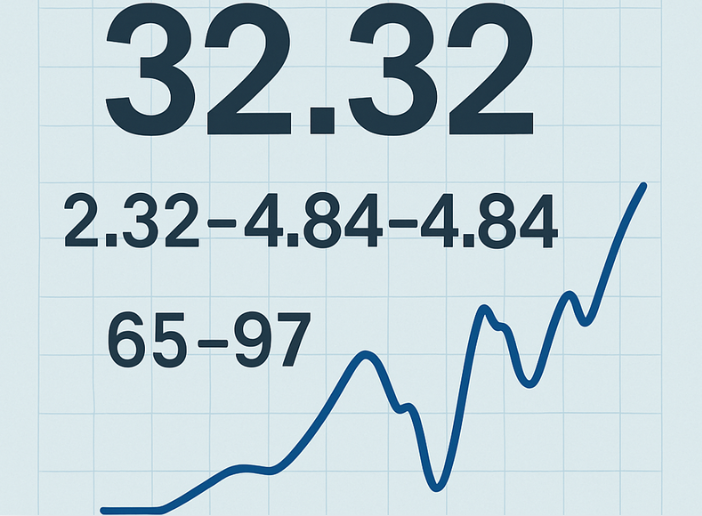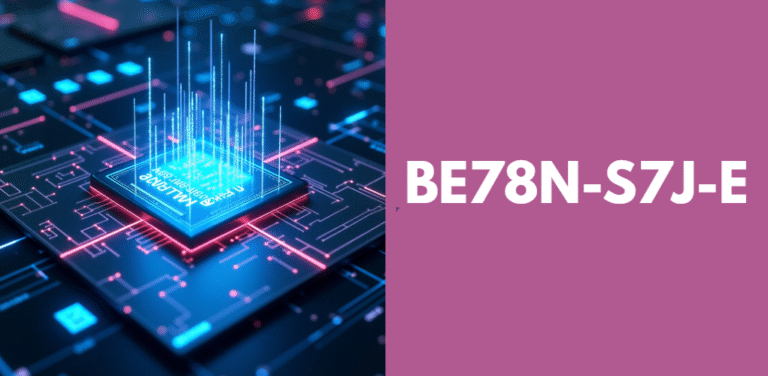Understanding “32.32 2.32-4.84-4.84 65-97”: A Deep Dive into Numeric Patterns
Numerical sequences often carry more information than meets the eye. When you encounter a string like “32.32 2.32-4.84-4.84 65-97”, it might initially seem random. However, this unique combination of decimals and ranges may hold significance in different domains such as mathematics, engineering, data science, or even encryption.
This guide provides a complete, easy-to-understand breakdown and interpretation of this number string for readers of all backgrounds.
Introduction to Numeric Sequences
Numeric sequences are everywhere—used in data tables, scientific experiments, finance reports, and digital configurations. While some sequences are straightforward, others—like 32.32 2.32-4.84-4.84 65-97—can be ambiguous without proper context.
In this article, we explore each component of the sequence and what it might represent in various technical and non-technical fields.
Breaking Down the Sequence: Step-by-Step
Let’s first decode each element of “32.32 2.32-4.84-4.84 65-97” and understand what it could signify.
The Value “32.32”
This could represent:
- A measurement (e.g., length in centimeters or time in seconds).
- A statistical result like a mean or median.
- A decimal representation used in programming or data logging.
The Value “2.32”
This smaller decimal might be:
- A subcomponent of the first number.
- An error margin or deviation.
- A constant in a scientific formula.
The Repeated Value “-4.84 -4.84”
Two identical negative values often indicate consistency in error, loss, or deficit. These could be:
- Temperature drops.
- Financial losses.
- Deviation from a norm in technical measurements.
The Range “65-97”
Ranges like this usually indicate:
- Data intervals (e.g., age range, pressure limits).
- A span of IDs or values.
- Tolerance levels in mechanical or digital systems.
Mathematical Interpretations of “32.32 2.32-4.84-4.84 65-97”
In mathematics, this sequence might represent data derived from a statistical study or an experimental dataset. Here’s one way to interpret it mathematically:
| Element | Interpretation |
|---|---|
| 32.32 | Mean value of a dataset |
| 2.32 | Standard deviation |
| -4.84, -4.84 | Deviations or outliers (duplicated data) |
| 65-97 | Range of the dataset |
The repetition of -4.84 could suggest that two data points lie the same distance below the average, implying symmetry or consistent deviation.
Scientific and Engineering Context
In engineering or science, this sequence could appear in measurement logs, sensor outputs, or calibration results. For example:
- 32.32 might represent a calibrated reading from a device.
- 2.32 could be the margin of error or measurement uncertainty.
- -4.84 -4.84 might show recurring drops or faults detected during testing.
- 65-97 may denote the operational range or environmental limits (e.g., temperature or pressure tolerance).
Such values are often found in technical specifications where clarity and precision are key.
Technological and Coding Possibilities
In the digital and tech world, sequences like 32.32 2.32-4.84-4.84 65-97 may appear in logs, configuration files, or datasets. Some plausible interpretations include:
- Settings in a gaming or simulation engine.
- Coordinates or dimensions in a graphical interface.
- Configured thresholds for software automation.
These numbers might represent data input and output values, or performance metrics used for diagnostics or debugging.
Cryptographic or Data Security Interpretation
Though less common, numerical sequences like 32.32 2.32-4.84-4.84 65-97 can be part of cryptographic keys or encoded messages.
- Decimal and negative values could serve to obfuscate meaning.
- The range (65–97) may correspond to ASCII characters, potentially translating to a short string of text in encrypted form.
This application would depend heavily on the context in which the sequence was found, particularly if used in a secure communications environment.
Economic and Financial Usage
In financial contexts, such a string may convey economic data or business metrics. For example:
- 32.32 might represent a stock price or average value.
- 2.32 could be the percentage increase or return.
- -4.84 -4.84 might represent repeated losses or downward trends.
- 65-97 could relate to an index range or earnings forecast.
Consider a stock analysis where two separate events each led to a -4.84 drop, signaling a repeating pattern of risk or volatility.
Real-World Applications in Various Fields
To show the potential versatility of the sequence 32.32 2.32-4.84-4.84 65-97, here are some real-world inspired applications:
| Field | Possible Use of the Sequence |
|---|---|
| Engineering | Measurement readings with tolerances and consistent deviations |
| Data Science | Dataset with mean, standard deviation, outliers, and range |
| Healthcare | Patient vitals over time (e.g., glucose levels or BP readings) |
| Education | Score range of students, average and standard deviation |
| Retail | Sales metrics over a period with loss factors |
Challenges in Interpretation Without Context
While we can provide educated guesses, the real challenge with sequences like 32.32 2.32-4.84-4.84 65-97 is the absence of specific context. It’s like seeing a puzzle piece without the full image.
Possible challenges include:
- Ambiguity: The numbers could belong to multiple disciplines.
- Over-interpretation: Reading too much into simple data.
- Lack of metadata: No time, place, or source associated with the values.
Conclusion
The sequence “32.32 2.32-4.84-4.84 65-97” might appear mysterious at first glance, but it opens the door to various interpretations depending on the domain it belongs to. Whether you’re looking at it from a mathematical, scientific, technological, or financial point of view, its components are rich with potential meaning.
Understanding such numeric strings requires a blend of analytical thinking and contextual knowledge. Without that context, the best approach is to evaluate the structure, frequency, and possible real-world applications, as we have done in this guide.
Recommended Articles
RT69264 10-Hook Rack: The Ultimate Space-Saving Organizer for Every Room
Planta Fluidos de Perforación en Punata Camacho Edo. Zulia: A Comprehensive Insight
Profile Mia66 from Portland, Maine: An Inspiring Story of Creativity, Community, and Purpose
tvwiki.barogogo.kr: The Complete Guide to Korea’s Entertainment Wiki






